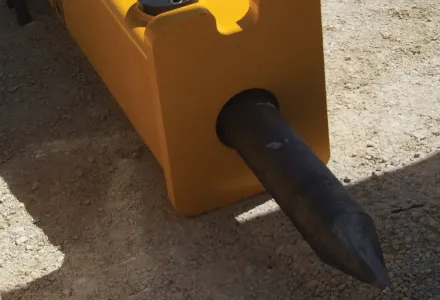Moves are being made to develop barrier protection for motorcyclists. Many public highway authorities take little note of motorcycle riders at present, considering them a small minority and assuming that any additional safety measures will be costly and provide little gain in saving lives. In spite of this narrow minded attitude, some manufacturers have recognised that niche opportunities exist to improve safety levels for powered two wheeler users through developing innovative new products. Italian barrier
March 9, 2012
Read time: 3 mins

Moves are being made to develop barrier protection for motorcyclists
Many public highway authorities take little note of motorcycle riders at present, considering them a small minority and assuming that any additional safety measures will be costly and provide little gain in saving lives. In spite of this narrow minded attitude, some manufacturers have recognised that niche opportunities exist to improve safety levels for powered two wheeler users through developing innovative new products. Italian barrier specialist SCT is the latest firms to reveal it is working on products aimed at increasing safety for motorcycle riders. The company will be releasing details of these products shortly, along with information on new terminal units.In this respect SCT is following earlier moves made by Italian rival
Both the Snoline and Basyc products provide protection to a fallen rider, preventing the sudden impacts with the support posts used to hold up steel barriers that can cause serious trauma and fatalities. Instead, these systems ensure that the rider slides alongside the barrier, reducing the risk of sudden impact injuries. The products are markedly different and Snoline's DR46 is a hollow plastic design that cushions the impact and which can be attached to virtually any type of steel barrier. The Basyc system is simpler and is basically a curtain made from a strong and durable material that is attached to the steel barrier. Again, this can be fitted to any type of steel barrier according to the manufacturer.
However, there are shortcomings in current European legislation and these are hampering widespread introduction of these innovative safety devices. Only Spain at present has a requirement for protecting motorcyclists and even this is comparatively limited. Moves are being made in Europe to develop new safety standards and requirements for barriers that are 'motorcyclist friendly', although it will be some time before these are ready.
Mass market
Meanwhile an array of new barrier concepts aimed at more conventional applications is now coming to market.Vehicle containment issues are increasingly moving up the political agenda as the need for road safety improvements become apparent. It seems likely that many of these new products will be used widely across the road networks of North America and Western Europe, as well as in the improving highway systems of Eastern Europe. With the Chinese highway network growing at a ferocious rate and the authorities becoming aware of the need to maximise road safety, it seems likely that all the major barrier manufacturers will benefit







